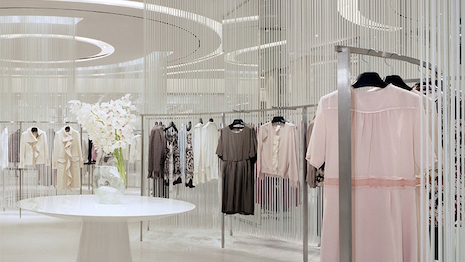By Amish Dargan
Canada is becoming home to a rapidly increasing population of affluent residents, with growth surpassing that of the United States.
More than 335,800 people fell under the category of high-net-worth individuals in 2016, with net assets valued at more than $1 million. This group is expected to grow by 50 percent to 503,800 by the year 2026.
High on growth
Ultra-high-net-worth individuals – those whose assets are valued at more than $30 million and above – are also expected to grow by 50 percent by 2026.
UHNWI are expected to grow from 4,110 to 6,170, and those with the net worth of more than $100 million from 483 to 725 individuals, and billionaires are expected to grow from 40 to 60 by 2026.
From the year 2015 to 2016 alone, there has been a rise of more than 15 percent in the UHNWI category.
While the rich see a steep growth in their population, things do not seem so well for average Canadians.
Even though there was a rise in HNWI and UHNWI populations in Canada, there was only a 0.1 percent increase in the average income nationwide. This income divide is restructuring the economy of Canada.
Even banks such as the Citigroup have asked investors to focus on businesses – and especially luxury goods – catering to the rich.
Luxury goods’ allure to ordinary Canadians can be gauged by the fact that, according to a Canadian study, more than 30 percent of revenue from a shopping mall with more than 240 stores comes from only the top 24 stores.
Here are a few sectors that have witnessed considerable growth, and will continue to do so in the coming years:
1. Jewelry
Canada has seen a steep rise in high-end jewelry stores catering to HNWI and UHNWIs.
According to a Euromonitor International report, Canadians spent more than $2.1 billion on luxury jewelry in 2016, up from $1.3 billion in 2011. This steep increase of almost 60 percent is an indicator of the rising spending of Canadian citizens on jewelry. Things sure look good for luxury jewelry in Canada, and are set to remain so in the coming years.
2. Watches
Canada has witnessed a new found-love for watches among its citizens.
While the sales are much lower as compared to luxury jewelry, things still look good for luxury watch brands.
Sales of luxury watches have gone up from $166.3 million in 2011 to $214.1 million in 2016. This may not be as high as the growth spurt in jewelry sales, but it is still a 28.7 percent increase, which is considered more than decent.
3. Luxury cars
This is another luxury on which Canadians enjoy spending their money.
Luxury vehicles including large luxury utility trucks, luxury high passenger cars, compact luxury passenger cars and luxury sports cars have seen a sales growth of about 8 percent, from 4,500 vehicles in August 2016 to 4,900 in August 2017.
While this number for luxury vehicles may not be very high, there is potential in the market due to the introduction of of ultra-long auto loans in Canada that stretch to up to 144 months, with lower interest rates.
4. Fashion and boutiques
Fashion and boutiques are newly growing luxury avenues in Canada.
High-end boutiques of brands such as Tiffany, Chanel, Gucci and Hermes have opened in Toronto neighborhoods such as Bloor Street, which is often known as the “Mink Mile” due to its concentration of high-end brands. Other locations offering high-end boutique collections include the Holt Renfrew department store, Yorkville Avenue and Yorkville Village.
5. Weddings
Another new-found love in Canada’s luxury products field is wedding products.
Bridal shops have come up in Toronto, including Kleinfield Hudson’s Bay, Beckers Bridals, White Toronto and Jealous Bridesmaid Bridal Studio.
IT YET REMAINS to be seen if Canada will continue to see rapid growth in luxury product sales in the coming years, as is expected. Determining factors include the Canadian economy, travel patterns of different countries, and even the country’s immigration policies.
Looking at current trends, things look very well for the Canada’s luxury sectors.
Although growth may be slower for some mediocre retailers doing business in Canada, 2018 will surely prove to be an exciting year for luxury retail in Canada.
 Amish Dargan is a luxury expert and brand manager at Dufry
Amish Dargan is a luxury expert and brand manager at Dufry
Amish Dargan is a luxury expert and brand manager at Dufry, Toronto. Reach him at [email protected].
{"ct":"wSNDQFSUdhGpMqKbLhrozt3E4i+j9k+c7A9QgTMGifo2V6Cnpg1VgBosDpqAQcuwVQj8kWEKd+k\/E+3RuX5YmDp\/KQUgEkW1ZdxN4iTg+bdBXFEGoqAxZE4xiSsg\/CZpU\/57lPw6XIWcgZLVnoIeL4xd5MqXWCZjBPOyPst89S\/4nuU1JuvTQ91+t6BAXzha6ahLUV52y0sJJMFjHRJHDHLzV73lDF3C93rj02L1AD\/8UISMG4i3LL8Ku\/ZXAAwYmgK5fcU2fbjvOyl\/BVNZ5+J9vXkTrUBkk5c\/wiI7ci2yX03dkc9Nr8dXrVAMSXjC+TszWYd1zK160\/EjzQgw+d+oEECUyxF1Fvs\/bC6BJAkRiv0Mi+iuoB0pB1AP\/9CO9Bo029gTftKb9Wrk2GePyVOE\/szPwnpTguBy6XOtl9+IVnbnLG0SiPn6H6ifKI6O0BsZ5teIYqf6NyZw4Mbv2\/UgfJKVhkluI2+y6xd0V1a\/9zd+Dk1lO\/2Pu+YfbMuCNTP8Sdv9XFS0nMt4en6lVTeO\/mbUB5sT9jS2BC6x+r\/IIYu7hQQgEhG7cwKrmfJOen9pEWfdf8JkkYZztQBdrl9ERd0vv48Snxeg\/hIBK7vY5aGTProhny1\/1\/r263bOOjNxpxFQhwiZUcxb1h5KRCA87DT8xCji3yEPFkW8lzbYlW8LGP7RSIeER+Rlfb2dzfVv8L7KXn6Og9vqV0CSapBSqNcwUEBe+SSQ7fUmAmR3BvRahQUxaPB4qu\/KI53Q+EjyzuKE8+NfYJVio25xYpYc1nIcQyh3JXCW8ptgMJWoP\/BruDTHot+jK\/gigOrXUWKh+MjaksC20cr1D84pr\/hB7ClbYwp0PZhPQ8pvjzoiMVgnrqmd+8voJOkZ8pZETeXoqE4SHdI1q3Vpql0U+D5u1TfbbrZZnugl+yCt\/smjcZLXBIQKBhqC7evTjSA+wtnVmugY9WV97BY2DBFfIMGZHC8rebLaGNhoM0CRHyEZgLqrdBBMFmz0zVUr1JQSRRTwtna9DWZcnjuCkheGAG6tGBpYHTnRVxydBDfXPT3\/BOcfhWCkumUH1Md6zyidWnwint3jKorxq4MtCBS\/CXgZJ92zJeXzrpakWUqV49zCo8p8G5uOHvLBFaXNiWdn0kmj+QAliGgKhwi0pNsI4APZuEPP52wstQuLzuwaN1bAIawlafxpPc868k6+DUVvbOgYSr7+z1R46O89B8NNwVWHJLE8mdZXaSDeRp5EFCRMbRNGwPoUvnCPpwt\/yV58Ic5OuVw\/RQmM0jH6g13NNab1RqKi0aip2vgCtBoX9XJuIfLUarhXPTgJxYm\/kFkSCUKRl54XPhjQnM47dskcp7GCHZr03a+gnzxQUMQKmZVFzp7mODWNGMe2K95n6dRPn06bNk\/AfBcjVXGo1kFJvcVKsXJ7ihFoCwQfxGLhAydwg9rBB2IPTku6ZCDXhlJWtG\/imJSQa3qGoYh7hbM8bOL2LRIE16QnjaLbvk3KTLglSHjDOzlC5ao8IXtL16j1i2kkr1i5a6\/\/oz48dEFX+KASM+BX6GW7J7XiQqLifHHcVy7Vpm7UkRLrLfqqReJ6ElXC36XJqIODssSuUWBjCmduG7mX7+MMP6JLVQPG+HDjkjXwOsPreIXB1hk3th0B4si32ROjFgwfpg7sZU+D+lx89A7QHLURxEvVy2rJCmKaSoIXbntDEL8lNEsepUCIGvFTxJWSVBcjLY78l1KFwMxrxT7I18SxQRUovKyu8ZHyIUPl0otBK8CIrpPSOOVjqbtAIfXc5+Pnl39RKPnoLg2Bdh5z\/dXjb5UVP5NClVJQ12IzvtGt00iiG8a0YpMuASB7E23y2YQRHkkareZDWky2jyvFbDUuz6Sp4WBQWA3JVPCGNFetxJQKV1v55mmt3lrCMuwvyJEBQyZkNvNGaX4s5uKueMcKT3Dy2UMc\/839ZIT9tCa+\/PQWvN4kNYuQHctWY73z+D+DOSc0XOxdkR0+QINQDW6YLHSM2L6Gj5z99ypyeNOguABplQZUimIy7ctJMq8\/CSiBwQxKOYrs4vfgi\/6DPSYLvgO3ZPPbYRxtkCwF\/2geuwtcWl+I5R5zuMCVibxHhneIlBFm\/ZSLJdaIY89iglr8JhiwKcX392HB1llWYnCP0eIijKlfi2M0Jx9zFYY\/eGVvLm\/cXyhS1kF0QOjayu0XZ7mDsfOP1mfDheMa9fl5JvHs9QVRjdXf9wPRgMxo\/Y+uBOmDe\/LuBsAQlu5NosPyYXjcp\/2w3fzFwFdANX8Z31daUfLV2L4tq9SovSAtZap\/5uiHTaBTaYqJSqVdrHdYEinuNWDoj\/2EhqDZX\/mKy\/sGKM1G9WHVJiib9hSZ1lKUw3HxkgQg3WPAkMELyvPzV\/\/8qtstmOtIYehOagCDhf\/oQyrKLbZA6SUmx5XtamB4huWne9Mubnue2VLyHK\/ulRBRgYzjzosFNx\/XK\/eYTRBx2lpdyaBnMKCCbAflufySYqIPC35VcjPMlxoSBhe\/Ilq76jcoACa8dX7WQw+qt6VjFyuPYlISLjtFhfRx6hlh4ureFJb8BZJkZdIkqAX65dn1VmWnX7qiqc3WBcdESJaWQgcM+FmplfyeO6fqGT91MHJ3dekqnKVpbmQ78cFfy3ujrIQ4ZaeN2slHYxrR\/iJWlqcYRsAk5HWtzI613686ryXGTVnaV5FvHUd4slb6UqGTwk9CEYznTjSy\/HPsVBm2o6CDLb34QPXQfLih30plJ7cwwcBpw9fB1HWrhkux1VS3PEXs1b\/AjEINqa3opr3zV+50OE87KI9RVZaLHOlltyrm5FuvQeBowxgT63dG6U15+Q0IkMyc+E\/FOIwud0ph9b2M6iepX3k1MTyScIWbkv5ggCMUHzsKqadlLuNTd1bOoMhshiadvxDDpqnAq+pTg+0EM1niSULxE5a3pg7v8PAAW35rw\/\/9JDJPsBUbLS2X44Z6YgcWPrfYKbTiDU0\/y3g7nOTOe7BUwB4sYNaeRZAmn2gsDQNlMFp90cnGu9GOtAUAyFI4He3zTVL6NstlfpqW18speXv6MQDfduDDudAcT41qNU4HWu2U0zjKmjcP2DNNe5JWh9Yr5JwXBHOaRiEyXjhqlinivddRsJEFI2dAui0uZyrRf5QaDO\/S0vc1C5JhUE+mlFj\/fjelqPE\/p3LQai6092pJ6jMsp\/xW70wUjeFJxaOWGpr8vSRL4qhaqADrCchPpHwOG\/WJSF7hVfJA+\/Iiq1GSQ8vl\/fynJKNtKQFrE3jloxv6c+lsgSrhURfws\/NdlKCJKhhsNtk\/s7wnBtQc9TmFOWIG3ck3JYfRnXBBmps5+qi\/mkOFbdd3Hde2MJFwR7kW0zQmBoMYpUbmsA+BNP1lZD21yFVepepcRDAkvPYdEe7HbKU0vkq9bF84ObP8CKs1hjnrWDAWiDWJ60HMnTVxsfSIpm\/yldlTwz8Nygop8PQvNtpIRZJjbuMhPN0ULVrYD6s5uN\/CUtblv5Fxkyd+Vud1zrI4Dy667uZB1X9f8eWojPYMkwnoGwdzvyW9bekH5rNnZ8jAzWhoFCe5d7ohsoXWdkhbdZ1wImqUfgolRYrkbcBkvRDBci7MQbhlbkrp0OQMELz0E8ADWUh3m557Rzc0Vhr0PcZlwPX\/tIIEDFHEqSlUKrQ75TQ6LynUwmAdN8I6eBNuFgUBwSetMhMtA\/QBXIsoe7rQX9PNDzBV0wKlR88Kbrees1CnYKuN8wkIduaCTi81zfGihaHit+J2RnjTxQp3i5QzLMyS5pe4feCw+6LOYF9YE5Ou+BjjbFqSHZokqi9LAf7brrsWrxDRmhjV7TkB5nv9d4biGu5rHyPcIFh8Imx961BQLlPt1qDyW8PM63\/th9fQ2mWJs3mmOgmTFsEAYnOCf8N4mKFLhyNC5schCIzKvaUZ1W+VDXGP41MZRjsPrtESapnwnTsGbK0898r76gwLYAuANa3AIzagVTEGQhqn4iW71JILdZkGdedyOGxkvPcKXL4KioEnDsaevOjUHBkN5nuKqbJB4AON7sWn3R5SuamF8qaAlGCOsRKUa460HlgHVeYQ7dhJYvy\/B7ut+TBgFwCrurJFUywO73jnALphOWOMKu3BH\/cxuQ3Koa32ECeYE82PUWJCK\/LxlywN0vlyWD6BGTyN+cn7BNYqPl6To6rqKMrArPANmuOYTbc8JTw8AXwh+VoSSd+41\/fV5TT273q+\/bC23\/M0qGiRpnrS9GRlfQEdVykHZawXlHBmxgtFa+LRMPrh7uvRjrUZ8KpseRMZ\/GT4MHg3HmQcyqI61XddzBDavrlBRG5ZEMtrGN1x5wusqwUPJ8JMQlbLlBkuOHUlj7hi0BXnmvtDcoH0bRUEQ7ZqlPaFWuWHtHJmlm3z8cK09vzvdU\/OAo+cJHb4wWPa5LSs4NEi2nOaeLqWktVTd4nBa5Ppj9tGjIsqGJIsfgZo05XIyyNKWFV3eWm4+xFqe0\/Bfx6baCCjFUHsZaHsRP3QnvIsr4dZQLK1RGoCIp5MkNXMuGBGXrpV9+gJF5A5LnCW4PjG+BkY7KwzNhBpL1GuUOoTvmKtISXWdCa6r1\/r6MA4CPvpMJip1eysLb7qTT4\/50ZrkUOht6oQA6HDeSEFiClkCsyp0+lQMi9EnlKzNzJ3CrKhccj9x2qzCqlUU\/yYjRB+k7prmGOjfXljqyerYWH\/HjZbnUnVSaKqnTsF+1EBZLz4lTiL+eFdX5XqXHCvt7DU5zzBrkd3h8SovS4j1uI1MiX1W4qWLAez6n\/+NKSPdMoXWLt3gm38FQAwtWOmCM5rHP8z1TnMniOQfF9WMAhjoYSdi1qqOdg2TwFGui2Ma39lkG8TP+KDK9HLkp+f9e2ueHPawrqxfzb6gwBJ8u8rNAygnA2WUPU4yzFwvKkMfVGK+wHbKR8AG9feS2luISoXKiMACtX6bd\/Fe0+CCZ6izK+3HcaCz9\/I6lUFOqVlJVT4l34d9OQnyy8bk1FT4eNOPrA+LKsplzCxRjAXrhMfHsA30iD0CugOChqYrwlWDDOJ1SWjXTxQenvE9e4w\/Zb03P+\/sULQ5ezIDl2lhRiPGQgU1yQ\/\/j3EZJZgYku45P84p8w4BPpsOXvt3XIYfTapk2gv8u\/2hUFbWolGElOuC2X\/KI9RwoiwIP+Uu4Lv1NN3vKV4LBuuQQbAHw323neU0fLPo0UaWAwLCkWfidbkqHj5SzuA+vs23\/nfvYkJzTV5Z\/AQrGOyAExk2YGuMKF8AcnVXRZh0\/Tw3+TFfKmj98LHGsywA202qd38qCbrJxN6YWCEGKbifY5OLc196i3FMjoHp86vqeWnR11JdE+y\/ajpyN\/UsCI4s6bFI1WN8P1IO9hSw+xSu707iGtkFb3QW+7SisVSF9+OgZP3zLWr6DmGkiQ7P1\/ZTLgz\/Nh8JJHuz+dquoTOcp7pYe+kh6vh7v2+EjsbTaAiB06DnZ1nUi2sZXNCCtky1hJ1bE2\/MWe3eGZ1rLJgHc3PK+FeiLU8QaGaujWLi3plIzOdSQhuZbvCRoJxhzFLJHsnuI5fVcog9hKDFjmkLbonoj8HHs47PZ2BON7iCGFMbw1IFH1+W\/kfKNHPF\/qwitc2kjVH81lH3UyDPGanzAQsAWyCrioml9c8AgRun5mO4aePMV1SHpIibp1x20fSNI7M8u2rD2CGtsuiogVNtptF1ALAxeWalwxT++qrLzrhM809degCVOie0OBqj9NgR8qdcRovggvdpjrgHXQG2FXFjSMrSvdV0VuhrrZ8XsNJClJ8GfzrF6cVdlCpc0GGMOx6zXxqumenqUFfAijI+odn1I+IlgW4Kyb3n51Q5hW7B\/nz7ph3VIwtq\/FrgZWLyNvZ3fswgLqJAudpd6Mco7UJL1YwMbH5hZuLkbByv1GTgV6eZ1KziGsJwgWZqTFMA00Qs+5UDeh4mL+8rW2K5UXG3g+PLlcBthehOSQrCDczHmIDlAsEGPr1nOMHWsk3yLL5yb\/\/raeWH28rGCgqHVbfCaafZtktfQxhu2N\/5FS6+eUDFyb6vhG1HEX6nVb7kHA\/5AVdBrQWCXoqTRca4M3UFTrw+Et0N6m6So\/1DkNhDvLcKTrLDNl+gYl\/1KsV0YrSd2k+COdCsN65eiATZo47+If\/aY+J9bc9gf+Vl2yVI9p+3q1KxcSJyq1Qfd4ucOVJJeQ5C1QvNQUX0N6xEcDi9G0ax0ip3S6W6f172k5QAHd5BORbvoTZaadbSPOlxVtPAUwl+Fjnqnvgr++\/\/4NdjJvlq05z3m4VDPYSjuMcjGgvmCOi5sDohfV5PCPkHzA4pIRq8Mw5maIqxOgEvTJpU90\/KN12hscP86dUiK+Ak9jwVxiGeVzpzEX6sH7ZMWZ2mM0QMkHjDWeXhpUl6zsN9nc6i7K9b+1I77OkXTGlvVx8jlYWNnC+18Ir\/R09Ex+ST6jC3d1dKScHzc4Ox2mH8dnVgElQf3Z00mtegADHzimpEYLuaMXrznqhK2bdW\/a509L7PtiTT\/lT30j9QtuiQ4W2WKIFX7Ib58IOPlLThc3e+CYASFovwBdcMtO+x90fBk4pmyPtrI1yHlt8TGcAFF5rd5h5+GDNMrcPnL4wdCKoih\/q6qdoGsppb7xlRex8hexeLJgSi2\/GMAjnhX3f0LwHX\/4biK4e2W0mBGGloP1JG\/oHpskVPkYDU23ao+5ylUzR3SCAGvdxQ05BDxhrFPgJb7fRhJHJhVAP+zMyU5tao\/P5ur29w+B+LYHNKuB3LSQNgzoaz6t0gtbwvoE73xAyT534ok3kvbM4TsU1qlEhCPg4HvJkRsqumAE605J3R+INgOnZpl6tkcjK3WeKNXIY2+CeR5ZJ8HeKHeAbMhUlfHUikbeXqlGbdOFom+Kg8JrrAt6jAH3ZWl12XE7syIwuDleyG1XyRegf31t3DvwHXXgjuvyXlWZWibc+gTAfw7Fcyo8uJ\/6vUQZtO9lXmrLi5e7UCCmMfrlrw8HGPiWUgiFeJlaNvv3NBHkF0WcRfFvjZCi3+W8pc09Zi690FiW6vN9umnx6WHU50oobC4danpD0SujBZ9bpih1aDC7KEsULVwrZAq6xOMnNC+on\/QEvzlJXPbsGsIVshORG1DSuK8IwrpnixyKrtrnc5VFwWpQ0mWQYqOoJi+8iNLKAngOT6n1QmjfBcJIjI9QcJwB5eWRciOjsUhAjnCWST7CNv7XAyhhSpQ\/4YYquldBcChhQiex7VPKmqI25F2M6+zjFY4NAhU6M4E8\/48kCFdJj2ZgjxbieU2tBjfbLKRgY9nyBXoDJI7LMiXWI9\/IGG0TzKvwcrHQL+OSLtt27Yo2e7UMY5WTT1dE4+Avj7g0SpLKP1jaxolBhzUMbdI04ijsyUY98XPtfVFlmuXwG9lBdGuLpXyYIyeBNbnEe\/I91rGWV4WHr+EgBR5jpGy8xDlTAM1S0SV1IMZ6BekyTfNP7JY8VqniR4rhdQKboPms28yzPITVupxRBAA6JQNkIShp\/dawCe8VxN\/Y+OZb\/30trHEKdh7efl78p84TLkmXJPRglP7jgfuV2xPp4MjiyauzwBRtHpWN4dUepzsiDWEC\/romihNXJkyBCfeubGdojSui4cfkIZ6bSsdwqKpTg4ilgbgPTEHsoTqwHlelg3d931IzA+hfzQ2VtdRU17uedoBKFyCw1iefyblqLQQSarkbNQP3WWeXyE0n9jMaZYCZlJaBrSYTE\/BHinvT5n+h+TIlr7sLea\/x7\/laFrr2u4MWyr7hl5kr9MCFSsLeB0HhqpITqvHfO6Gp9A8GY1x4AuNa1\/IqKHfpVMLhMkT4Mlvkqq9Bcv9rwFY4u6\/ci2aoRyuKvYRK\/97cNs+2BJ6haaQ==","iv":"a30a87da3068cfc1e8408f670a281957","s":"ca9ca6cd2aa7e958"}

 Holt Renfrew's store on Bloor Street in Toronto, Canada. Image credit: Holt Renfrew
Holt Renfrew's store on Bloor Street in Toronto, Canada. Image credit: Holt Renfrew
 Amish Dargan is a luxury expert and brand manager at Dufry
Amish Dargan is a luxury expert and brand manager at Dufry